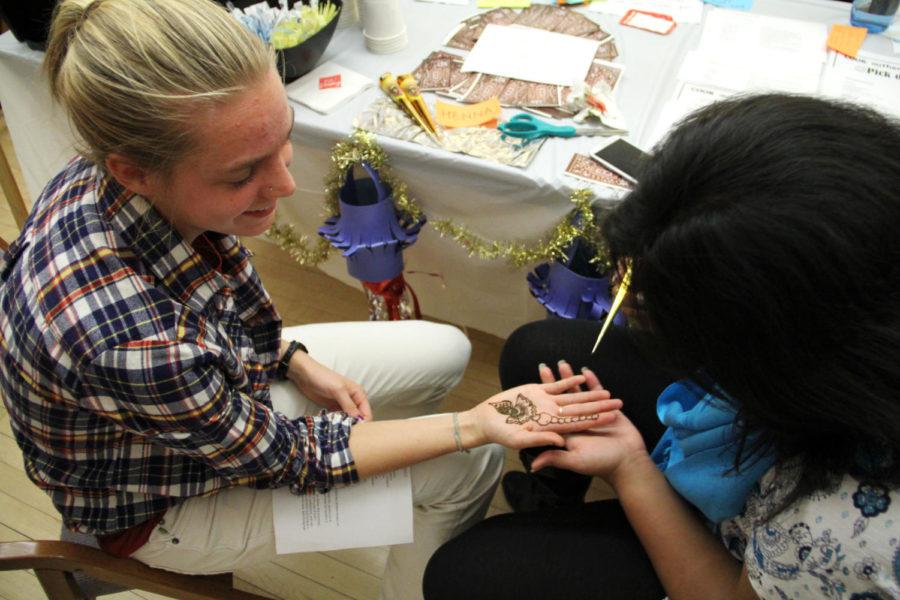International Week Bazaar
November 14, 2012
International students from countries and cultures all over the world gathered Wednesday in the Gallery Room of the Memorial Union to share their culture with other ISU students.
The International Bazaar, part of this week’s International Week, created a forum for international students at the university to show their pride in their native lands and share a bit of home with other students.
Student representatives from a dozen international student organizations such as the Sri Lankan Student Association, Nepal Student Association and the Association of Malaysian Students at Iowa State, had tables set up with clothing, paintings, brochures and travel guides that all played a part in describing their respective native countries.
There was also tea from over a dozen different countries that students passing through could try.
The different booths set up had an array of colorful objects and clothing that were used to lure in students passing through as well tri-folds containing information about the different cultures and countries.
Some of the student organizations have been around for many years while others are starting to grow in size as they begin to gain more exposure through campus events. One organization that is relatively new to the events of International Week is the Indonesian Students Association.
Wicitra Mahotama, sophomore in environmental science, is a member of the organization of about 35 members. Mahotama grew up in Colorado, but his parents still live in Indonesia. He said that he is excited for the organization to gain more exposure.
“We are trying something new this year and putting ourselves out there,” said Mahotama. “I actually became a part of the club in high school, and this is the first time we have had a booth at the Bazaar.”
Mahotama talked about the fact that there are over 13,500 islands in the country, and each island has a unique culture.
Some of the items set up at the booth were batik, which is the most common type of clothing in Indonesia and wayang kulit, which is a type of shadow puppet that has very detailed features even though the audience normally only sees the shadow during a show.
Mahotama said that there are over 30 different characters that wayang kulit come in, and each has a distinct meaning that relates to the island it was made on.
Le Lee Yap, senior in dietetics, is the vice president of the Association of Malaysian Students at Iowa State, and their organization has been around for more than 30 years.
“The main purpose of our organization is to reach out to Malaysian students new to the [United States] and support them in any way we can,” Yap said.
Yap, who was born and raised in Indonesia, said that her favorite part of her native land is the merging of cultures.
“There are three races that are prominent in Malaysia: Malay, Indian and Chinese,” Yap explained. “I would eat Indian for lunch and Chinese for dinner on most days, which is very unique.”
Yap also described how proud she was to be from Malaysia and talked about how important it is in her culture to pass down traditions from generation to generation.
One item from her homeland that she was particularly fond of was the Wau, which is a handcrafted kite that varies greatly in size and design. Yap said there are competitions held in Malaysia to determine the best looking and highest-flying kites, among others.
The International Bazaar is a part of International Week, which concludes with International Night from 6-10 p.m. Friday in the Great Hall.







